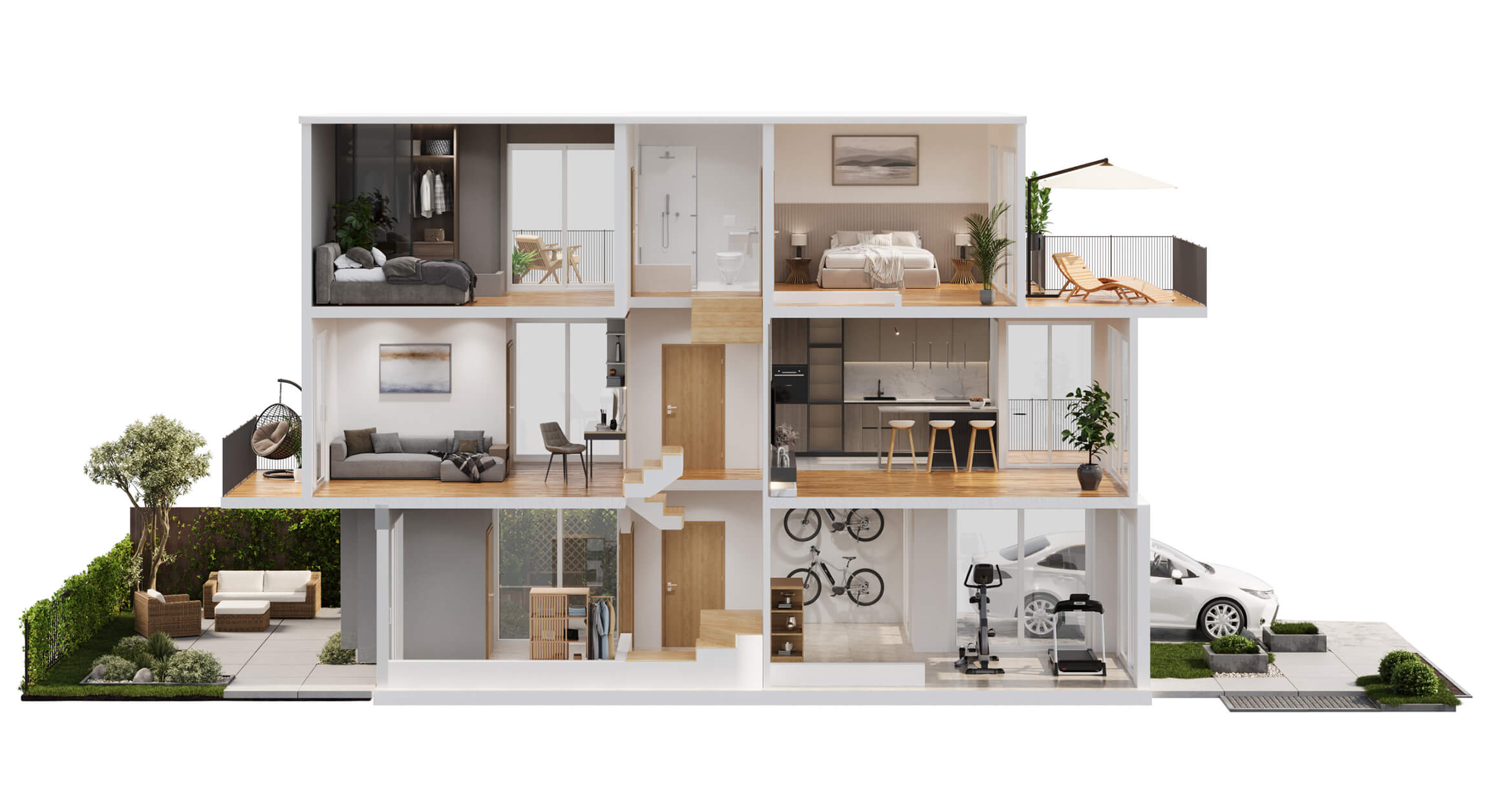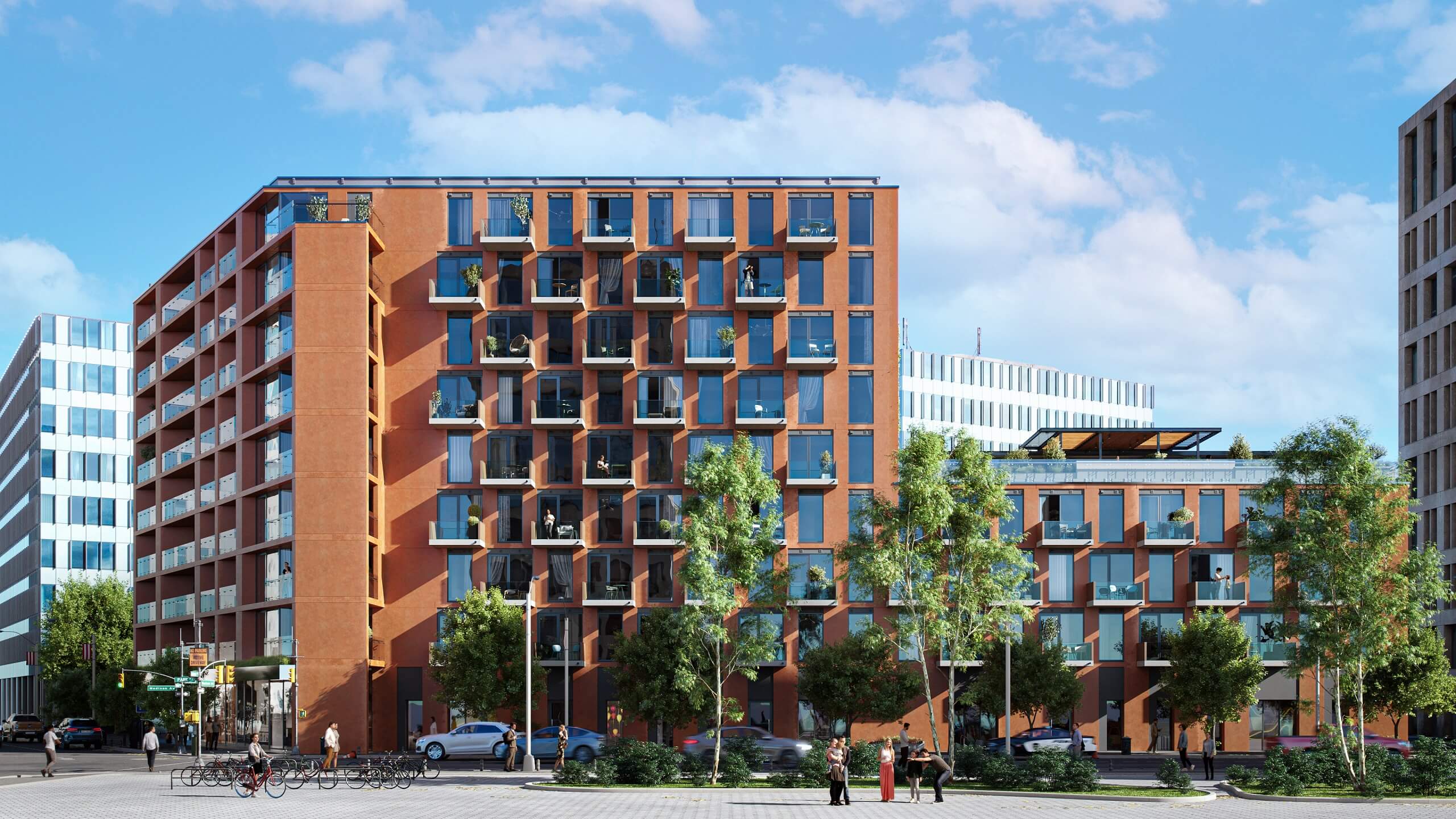CGI is an indispensable tool for architects and has been for a while. However 3D rendering technologies are ever-changing and developing. Even if you use 3D visualization in your work, there’s a good chance you might have fallen behind on the recent trends that could make your presentations, portfolio, or social media even more eye-catching and attractive for potential clients.
Our 3D architectural rendering studio is always up-to-date on what’s hot in archviz, and today we’re going to share with you the innovative types of 3D rendering every architect should be aware of. Let’s take a look!
#1. Dollhouse 3D Rendering

Dollhouse real estate 3D rendering presents architectural decisions as a realistic section view. This approach offers viewers an opportunity to explore the building or interior space as if they were peering into a real-life, three-dimensional dollhouse.
The major benefit is that one can use this technique to demonstrate various aspects of their design in just one image. In such types of rendering, one can showcase both the general layout and the smaller details, such as furniture arrangements and interior decor.
#2. Cutaway 3D Rendering
The next on our list of innovative 3D rendering types serves as a bridge between architectural designs and the surrounding urban landscape. These renderings offer a view into the interconnection of the proposed concept with the existing structures, both at the ground level and below.
For instance, cutaway 3D rendering can be used to showcase a building’s integration with transport and pedestrian infrastructure. By presenting the design this way, architects and urban planners can reveal how a structure will interact with roads, bridges, tunnels, sidewalks, and public transportation systems. This allows them to emphasize the safety, accessibility, and functionality of their concept.
#3. Cinemagraphs
Cinemagraphs are one of the most visually compelling and innovative types of 3D rendering. They blend still images we’re used to with animated visual effects. Namely, these renderings include dynamic elements that bring the images to life with subtle, continuous motion.
For example, a 3D artist can add the movement of grass and trees in the wind, gentle flickers of the fire, or lighting changes that come with the sun moving across the sky. This approach creates a captivating visual experience without distracting viewers from the design itself. That makes cinemagraphs a powerful tool for showcasing projects in a more interesting and engaging way.
#4. Immersive 3D Tours
Immersive 3D tours are made with Pixel Streaming — an innovative technology that allows users to view and interact with 3D visualization in real time using a regular web browser without any additional apps. This technology is used for large projects in the real estate industry and offers a lot of benefits. It allows users to explore properties from different angles and viewpoints, and with various weather, lighting, and decoration options. This way, Pixel Streaming enhances communication between project stakeholders. Furthermore, it provides a more immersive and informative experience, making it easier for clients to envision the final result and for architects to communicate their vision effectively.
#5. Aerial CG Animation with Drone Footage
Of all the innovative types of 3D rendering, this one brings photo matching techniques to a new level. It allows for creating an impeccably accurate view of a project in its actual surroundings. By using drones equipped with high-quality cameras, one can capture aerial footage of a project site that shows the location with its topography and neighboring structures. This real-world footage forms the foundation of the animation. Then the 3D model of the building is digitally added to the video, with the result looking perfectly seamless. This allows one to effectively show how the building will fit into the existing location.
Immerse clients into your projects with realistic 3D animations
Innovative types of 3D rendering emerge to make architectural CGI an even more valuable tool for architects and designers. They allow the potential clients and stakeholders to immerse themselves in future projects and interact with them in completely new ways.
Looking for high-end CGI services to leverage innovative types of 3D rendering in your work? Contact us at ArchiCGI and get a free personal consultation!

Stacey Mur
Content Writer, Copywriter
Stacey is a content writer and a CG artist. Outside of work, Stacey enjoys musicals, Star Wars, and art talk. A proud Corgi parent.



